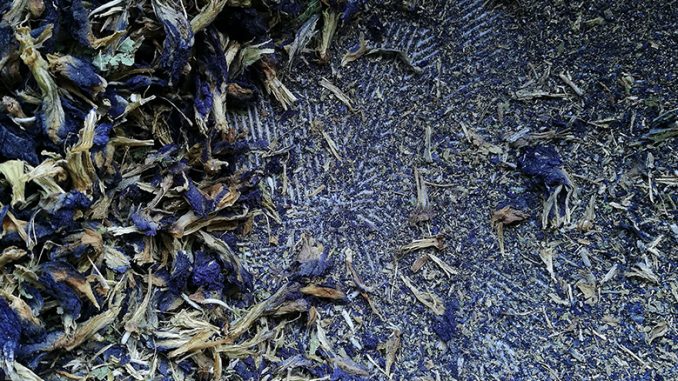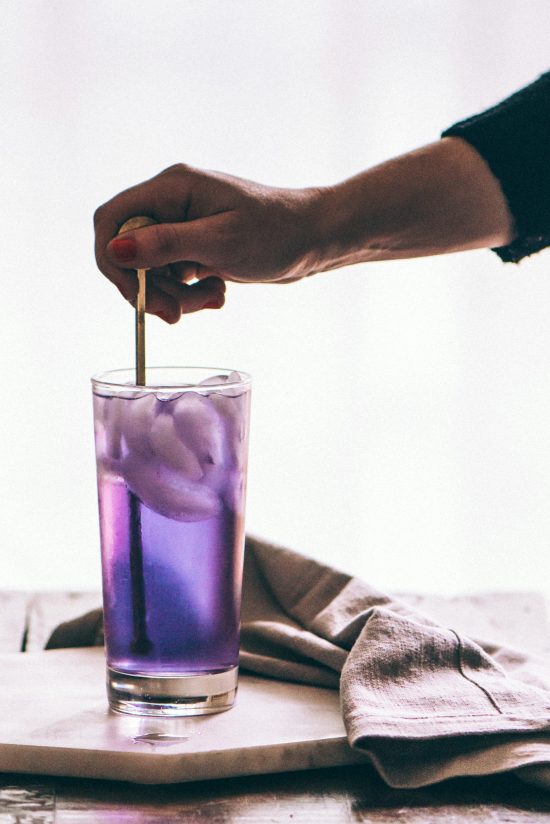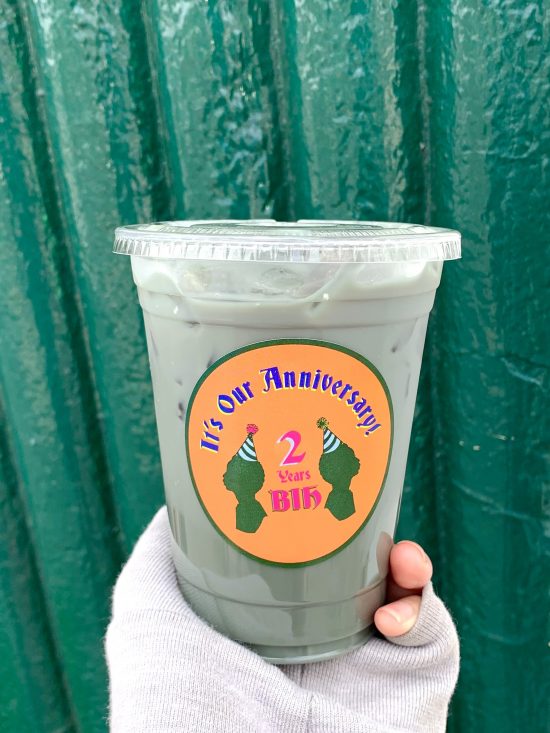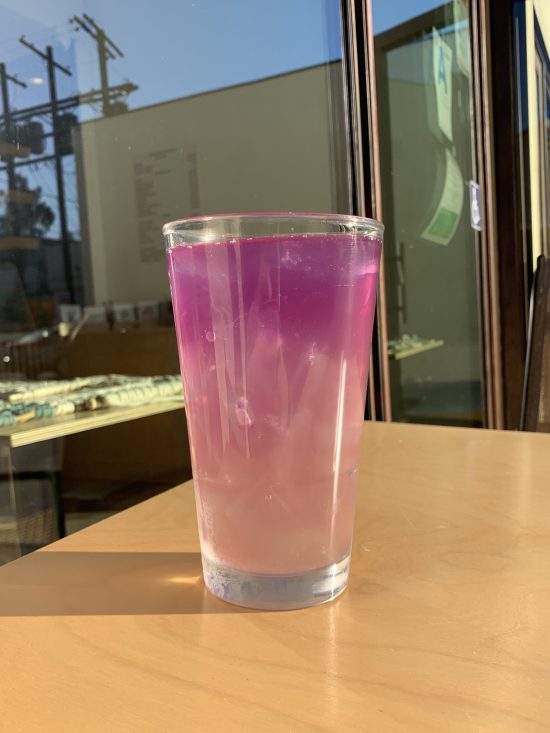
Native to Southeast Asia, butterfly pea flower’s vibrant blue hue is making waves in the Western coffee world.
BY EMILY JOY MENESES
SPECIAL TO BARISTA MAGAZINE ONLINE
Cover photo courtesy of FOODISM36 for Unsplash
Mesmerizing and iridescent, with a deep blue color reminiscent of the ocean, butterfly pea is a Southeast Asian flower that’s making waves in the Western food and beverage industry—and for good reason. Who could resist adding its gorgeous hue to coffee, matcha, or lemonade? Even more striking is the way it changes color, from cobalt blue to amethyst, when an acidic element is added.
In this installment of “Know Your Ingredients,” we’re exploring this alluring ingredient’s origins and the ways in which coffee shops and teahouses are using it today.

The origins of butterfly pea
Sometimes referred to as blue pea, butterfly pea comes from the clitoria ternatea plant—also known as Asian pigeonwings or bluebellvine. This plant is seen most commonly in Southeast Asian countries Vietnam, Malaysia, and Thailand, but it’s also found throughout India, China, Central and South America, along with the East and West Indies. Here, the flowers grow naturally in abundance along riverbanks and irrigation channels, and throughout woodlands.
For centuries, various regions throughout Southeast Asia have used butterfly pea in food and beverages for its vibrant aesthetic and proposed health benefits. Subtle, earthy, and woody in flavor, butterfly pea is said to boost the immune system, balance blood sugar levels, and improve circulation. In Thailand, it’s commonly prepared as a tea with honey and lemon: a calming beverage known as nam dok anchan. You may also often find it mixed with ingredients like cinnamon, mint, ginger, and passion fruit, or as a colorful element in salads, rice dishes, dumplings, and cakes.
Color-changing properties
A huge part of butterfly pea’s allure is its ability to change color when mixed with other ingredients. Just as some flowers show up as different colors based on the pH of their soil, butterfly pea flower beverages can change hue depending on the pH of whatever they’re mixed with.
For example, adding something acidic like lemon will turn the tea from dark blue to violet, while adding hibiscus flowers will turn the drink bright red. Butterfly pea’s ability to change color makes for a fun bar trick when using it to craft cold brew, iced teas, or cocktails.

Butterfly pea in the Western world
Long common in Southeast Asian cuisine, butterfly pea has recently taken wind in the Western coffee and tea world. Coffee shops have begun incorporating the ingredient into lattes, iced teas, lemonades, and matcha-based beverages, a colorful alternative to typical café favorites.
L.A.’s Constellation Coffee boasts about the customer favorite Purple Rain, a refreshing infusion of ginger, lemon, and iced butterfly pea flower tea. Baltimore-based Wight Tea Co. also offers a stunning butterfly glitter lemonade, with butterfly pea flower sourced from Thailand’s Phetchabun Province. Many places also sell the tea as loose leaves for home-brewing—a great way for coffee and tea drinkers to begin experimenting with butterfly pea at home.

So how does the ingredient hold up in coffee? Because butterfly pea’s flavor is so subtle, the ingredient can be used to add vibrancy to coffee-based beverages without creating too much of a flavor clash. Try infusing butterfly pea into your milk of choice for a gorgeous iced latte gradient. If there’s one thing that butterfly pea has to teach us, it’s that we’re never too old to play with our food.

ABOUT THE AUTHOR
Based in Los Angeles, Emily Joy Meneses (she/her) is a writer and musician passionate about culture and collective care. You can regularly find her at Echo Park Lake, drinking a cortado and journaling about astrology, art, Animal Crossing, and her dreams. Explore her poetry, short stories, and soundscapes on her website.

